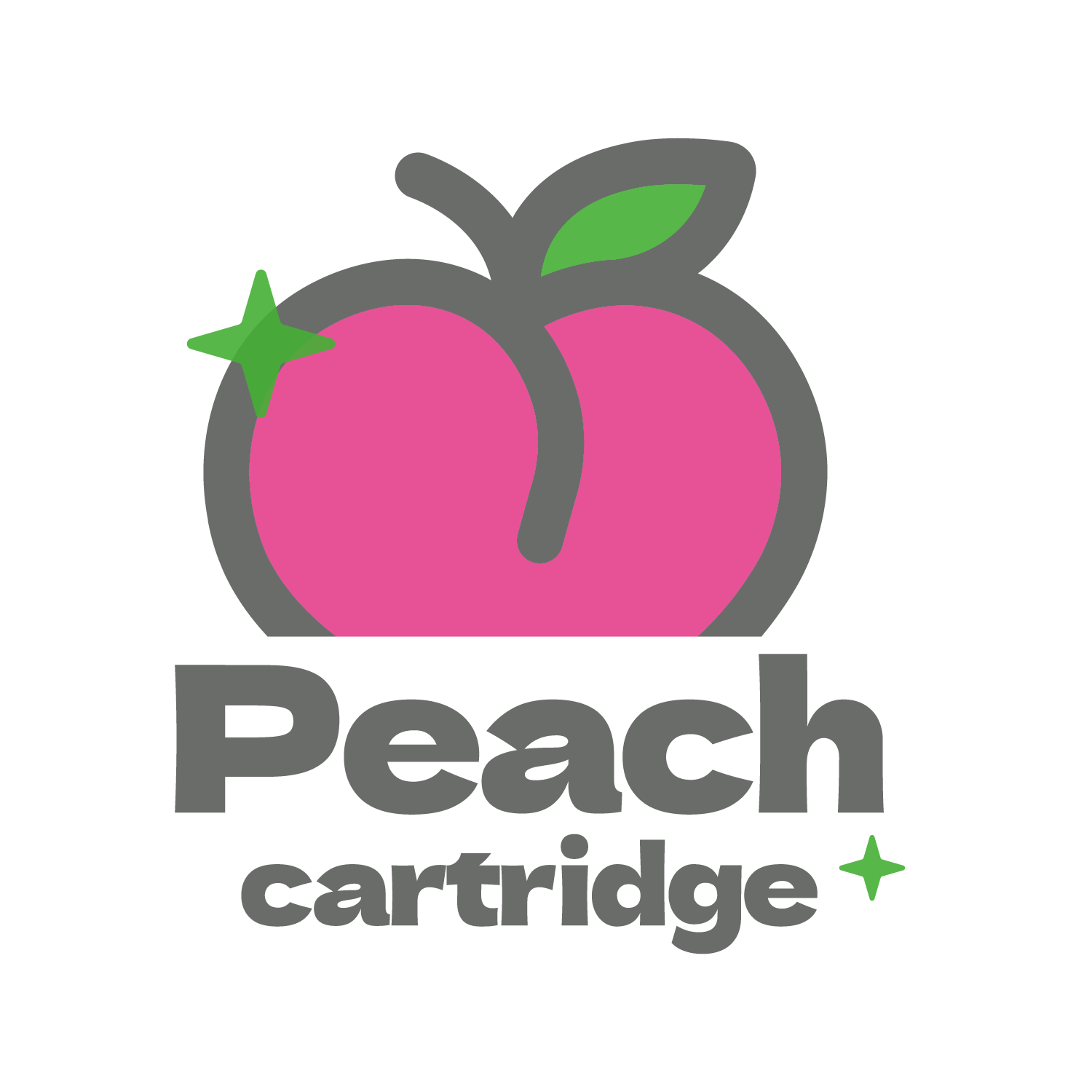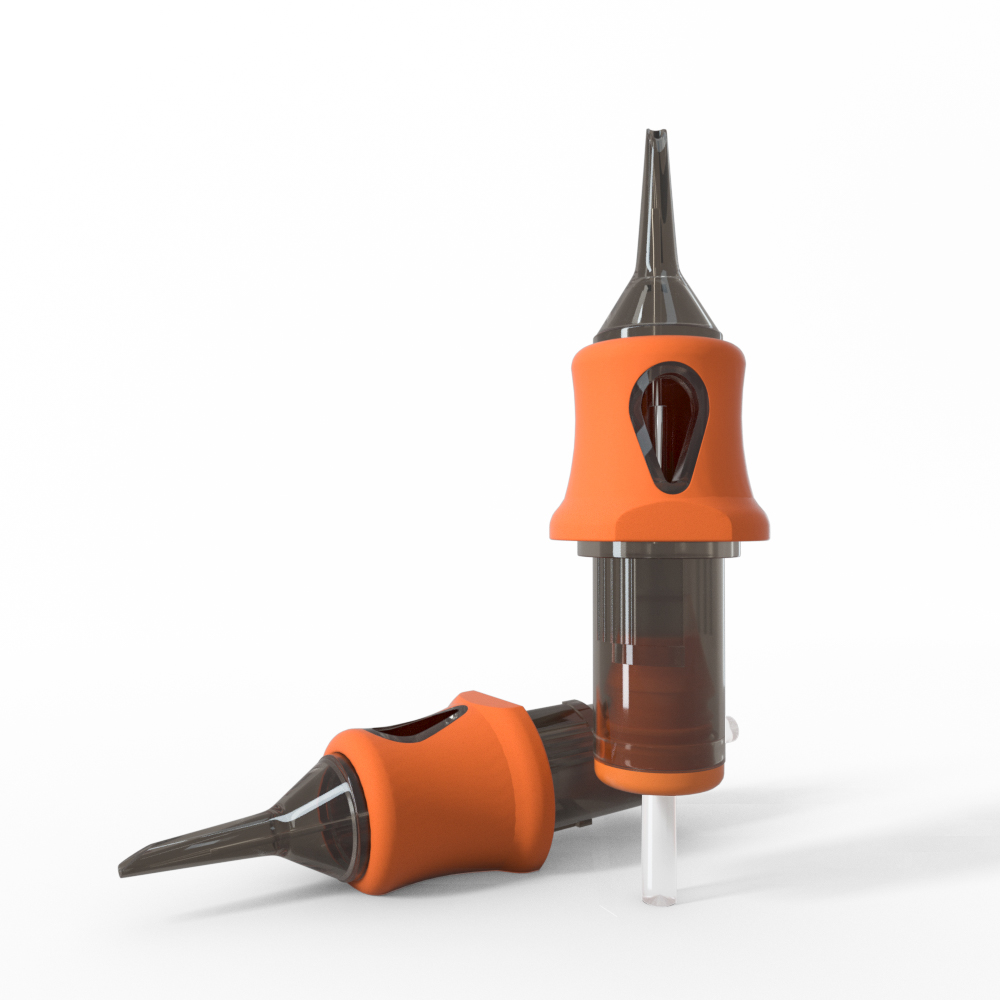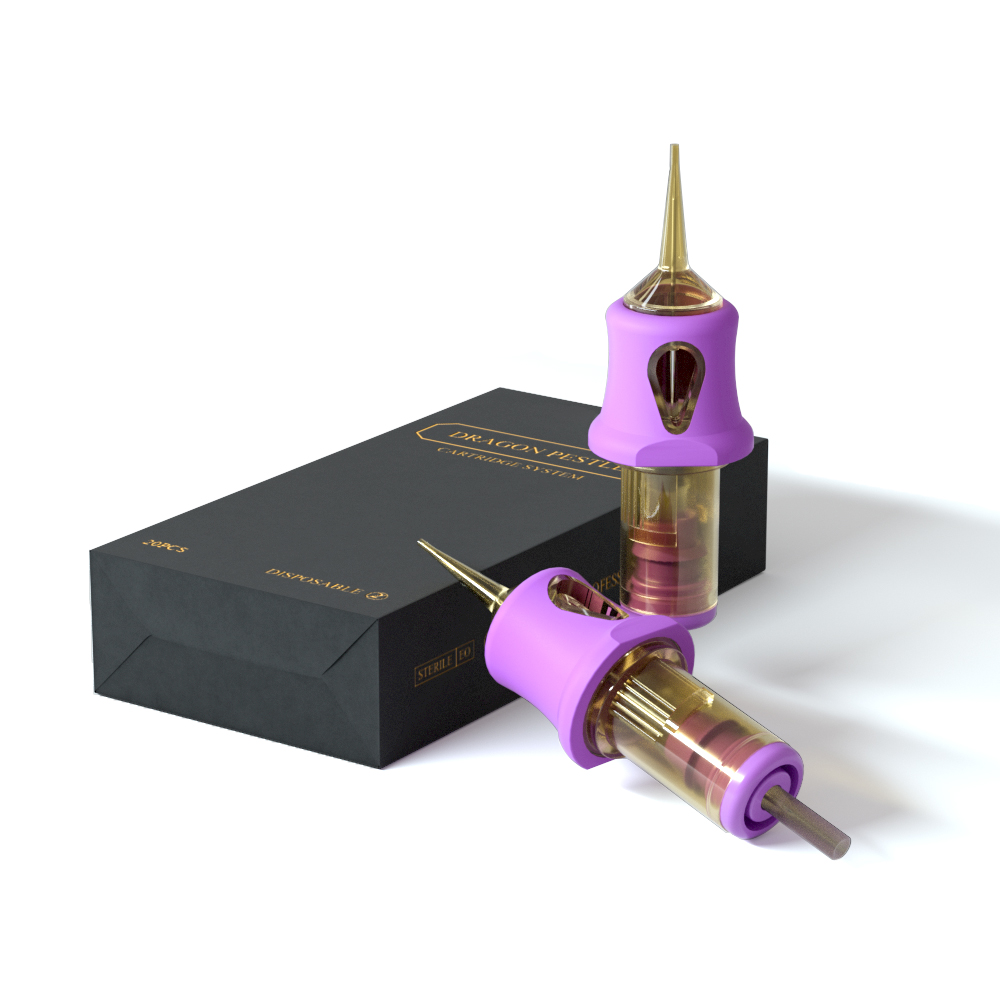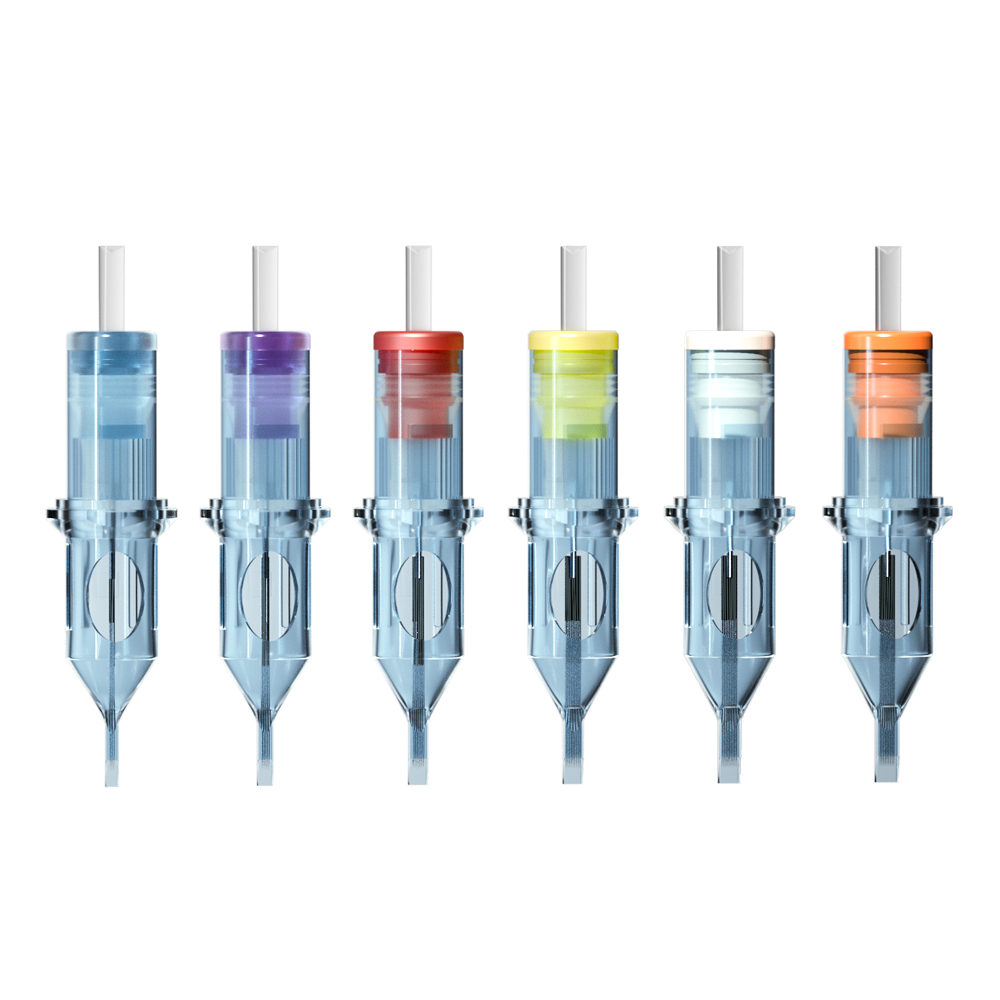1. Needle and ink tattooing is a form of body modification that has been around for centuries. It involves inserting ink into the skin using a needle to create a permanent design. This art form has grown in popularity in recent years, with many people opting for tattoos as a way to express themselves or commemorate important events in their lives.
2.Understanding Tattooing To create a tattoo, the artist uses a tattoo machine that houses a needle. The machine moves the needle up and down, puncturing the skin and depositing ink into the dermis layer. The design is then permanent, as the ink is trapped in the skin and cannot be removed without medical intervention. It is important to choose a reputable tattoo artist who uses sterile equipment and follows proper safety protocols.
3.Tattoo Machine and Its Parts The tattoo machine consists of several parts, including the needle, tube, grip, and power source. The needle is the most important component, as it is responsible for puncturing the skin and depositing the ink. Different types of needles are used for different parts of the design, and the artist must be skilled in selecting the appropriate needle for each job. The tube and grip hold the needle in place, while the power source provides the machine with electricity to move the needle.
Key Takeaways
- Needle and ink tattooing involves inserting ink into the skin using a needle to create a permanent design.
- To create a tattoo, the artist uses a tattoo machine that houses a needle and moves the needle up and down, puncturing the skin and depositing ink into the dermis layer.
- The tattoo machine consists of several parts, including the needle, tube, grip, and power source.

I:Understanding Tattooing
1.Tattooing is an ancient art form that has been practiced for centuries. It involves the use of a needle to inject ink into the skin to create a permanent design. The process of tattooing has evolved over time, with traditional tattooing practices varying across cultures and regions.
2.One of the most well-known styles of tattooing is American traditional tattooing. This style features bold lines, bright colors, and classic designs such as anchors, eagles, and mermaids. American traditional tattooing has a rich history and is still popular today for its timeless aesthetic.
3.Tattooing has also become a popular form of self-expression and art. Many people choose to get tattoos that are meaningful to them, whether it be a symbol of their culture, a tribute to a loved one, or simply a piece of art that they find beautiful.
4.While tattooing can be a beautiful and meaningful art form, it is important to understand the risks associated with it. Tattooing can cause pain, bleeding, and in some cases, infection. It is important to choose a reputable and experienced tattoo artist who practices proper hygiene and sterilization techniques.
5.Overall, tattooing is a complex and fascinating art form that has evolved over time. Whether you are interested in traditional tattooing or modern tattoo art, it is important to approach the process with knowledge and caution.
II:Tattoo Machine and Its Parts
1.A tattoo machine is a handheld device used by tattoo artists to apply ink to the skin. It consists of several important parts, including the frame, coils, armature bar, contact screw, front spring, rear spring, tube vice, needle bar, drive bar, and motor. Each part works together to create the perfect tattoo design.
2.The frame is the outer part of the tattoo machine that holds all the other components in place. It can be made of various materials, including steel, brass, and aluminum. The frame can be either a liner or shader, depending on the type of needle used.
3.The coils are the electromagnetic components of the tattoo machine that power the needle. They are made of copper wire wrapped around a core made of iron, steel, or other magnetic material. The number of coils can vary, with more coils providing more power to the needle.
4.The armature bar is the metal bar that connects the needle to the coils. It moves up and down as the coils are activated, causing the needle to move in and out of the skin.
5.The contact screw is the small screw that adjusts the distance between the armature bar and the coils. This distance determines the depth of the needle penetration into the skin.
6.The front spring and rear spring are two thin pieces of metal that help regulate the movement of the armature bar. They work together to ensure that the needle moves smoothly and consistently.
7.The tube vice is the part of the tattoo machine that holds the needle in place. It can be adjusted to hold different sizes of needles.
8.The needle bar is the metal bar that holds the needle. It is attached to the armature bar and moves up and down as the coils are activated.
9.The drive bar is the part of the tattoo machine that connects the motor to the needle. It converts the rotational motion of the motor into the linear motion of the needle.
10.Overall, the tattoo machine is a complex and precise tool that requires skill and expertise to use effectively. By understanding the different parts of the machine and how they work together, tattoo artists can create beautiful and lasting works of art on their clients’ skin.
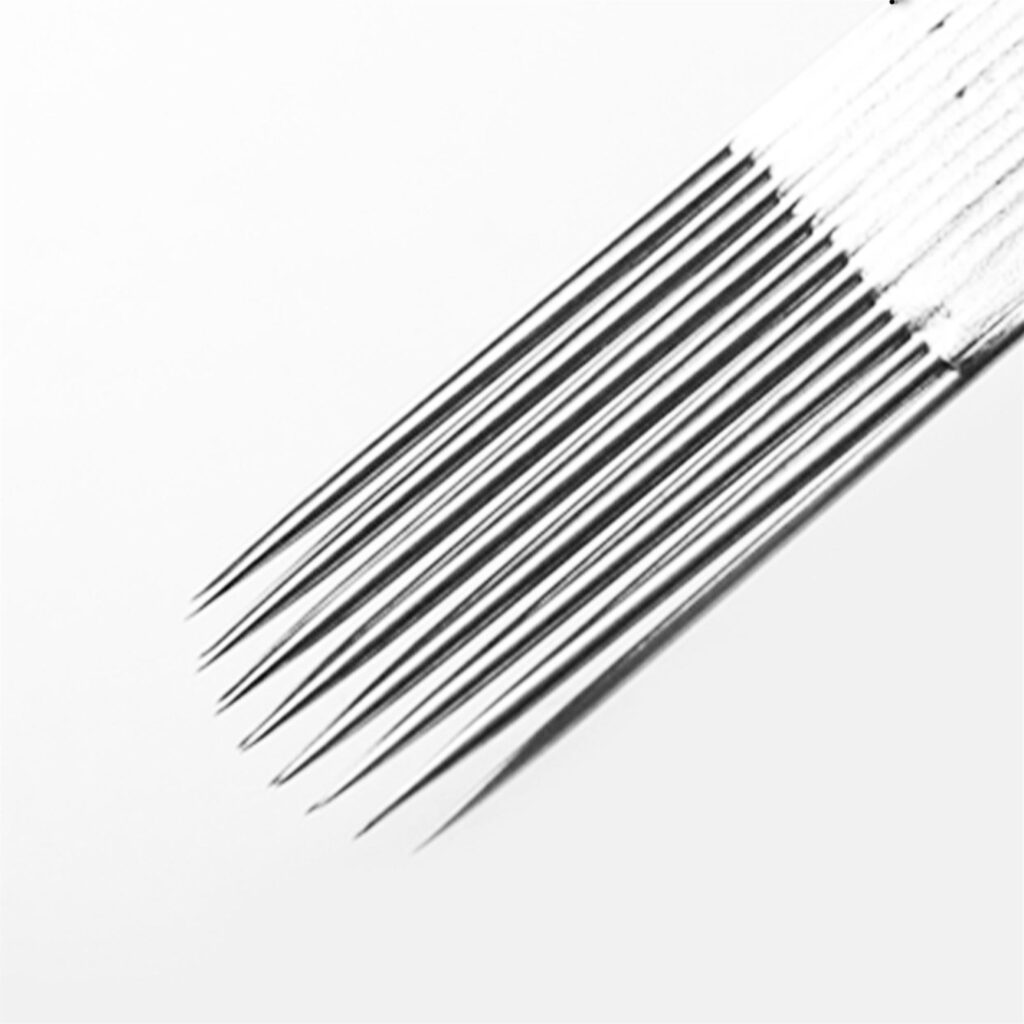


III:Types of Tattoo Needles
Tattoo needles come in various types and configurations, each designed for a specific purpose. Here are some of the most common types of tattoo needles:
A:Round Liner
Round liner needles are used for outlining and creating fine details in a tattoo design. They are made up of a single needle and have a round configuration. Round liner needles are available in different sizes, ranging from 1 to 18, with 1 being the smallest and 18 being the largest.
B:Magnum
Magnum needles are used for shading and coloring large areas of a tattoo design. They are made up of multiple needles arranged in a flat or stacked configuration. Magnum needles are available in different sizes, ranging from 5 to 55, with 5 being the smallest and 55 being the largest.
C:Liner
Liner needles are used for outlining and creating fine details in a tattoo design. They are made up of multiple needles arranged in a flat or round configuration. Liner needles are available in different sizes, ranging from 1 to 18, with 1 being the smallest and 18 being the largest.
D:Round Shader
Round shader needles are used for shading and coloring small to medium areas of a tattoo design. They are made up of multiple needles arranged in a round configuration. Round shader needles are available in different sizes, ranging from 3 to 18, with 3 being the smallest and 18 being the largest.
E:Flat Tattoo Needles
Flat tattoo needles are used for creating bold lines and filling in large areas of a tattoo design. They are made up of multiple needles arranged in a flat configuration. Flat tattoo needles are available in different sizes, ranging from 4 to 14, with 4 being the smallest and 14 being the largest.
F:Stacked Magnum Needles
Stacked magnum needles are used for shading and coloring large areas of a tattoo design. They are made up of multiple needles arranged in a stacked configuration. Stacked magnum needles are available in different sizes, ranging from 5 to 55, with 5 being the smallest and 55 being the largest.
G:Single Needle Tattoos
Single needle tattoos are created using a single needle, rather than a group of needles. They are used for creating fine details and intricate designs in a tattoo. Single needle tattoos require a high level of skill and patience, as they can take longer to complete than tattoos created with multiple needles.
H:Needle Configurations
Needle configurations refer to the arrangement of needles in a tattoo needle. The most common needle configurations are flat, round, and stacked. Flat needle configurations are used for creating bold lines and filling in large areas of a tattoo design. Round needle configurations are used for outlining and creating fine details in a tattoo design. Stacked needle configurations are used for shading and coloring large areas of a tattoo design.
I:Standard Needles
Standard needles are the most commonly used type of tattoo needle. They are available in different sizes and configurations, and are used for a variety of tattooing techniques, including outlining, shading, and coloring.
J:Magnum Needles
Magnum needles are used for shading and coloring large areas of a tattoo design. They are available in different sizes and configurations, and are made up of multiple needles arranged in a flat or stacked configuration.
K:Round Liners
Round liners are used for outlining and creating fine details in a tattoo design. They are made up of a single needle and have a round configuration. Round liners are available in different sizes, ranging from 1 to 18, with 1 being the smallest and 18 being the largest.
That concludes the section on types of tattoo needles.
IV:Needle Sizes and Gauges
1.When it comes to tattooing, choosing the right needle size and gauge is crucial for achieving the desired results. The diameter of a needle is measured in gauges, with a smaller gauge indicating a larger needle. For example, a #12 gauge needle is larger than a #10 gauge needle.
2.Tattoo needles come in a wide range of sizes and gauges, each designed for specific purposes. For instance, larger needles are used for shading and filling in large areas, while smaller needles are used for outlining and detail work.
3.One important factor to consider when choosing a needle is the taper. The taper refers to the shape of the needle, which can be short, medium, or long. A short taper needle is more rigid and is best for outlining, while a long taper needle is more flexible and is better suited for shading and coloring.
4.Another type of needle that has gained popularity in recent years is the bugpin needle. These needles have a smaller diameter than traditional needles, which allows for more intricate detail work. However, they may not be suitable for all types of tattoos, as they can cause more trauma to the skin.
5.To help artists choose the right needle size and gauge, there are needle size charts available that provide a detailed breakdown of each type of needle. These charts typically include information on the gauge, taper, and number of needles in each grouping.
6.Overall, selecting the right needle size and gauge is an important part of the tattooing process and can greatly impact the final result. It is important for artists to consider the type of tattoo they are creating and choose the appropriate needle for the job.
V:Single Needle Tattoos
1.Single needle tattoos are a popular form of tattoo art characterized by high levels of detail that can be achieved in relatively small designs. This approach diverges from the standard “bold will hold” ideas of American traditional tattooing that emphasizes bold lines and vibrant colors to create the stylized depictions of pinup girls, swallows, and tigers.
2.Single needle tattoo designs are created using only one needle, which allows for meticulous precision and hyper-realistic detail. As a result, tattoos done with only one needle can usually be achieved with high levels of detail, allowing for relatively small tattoo designs. This style of tattooing is perfect for those who prefer a simple design with a high level of detail.
3.Single needle tattoos are commonly made up of airbrush shading techniques and thin graphite lines, giving them a unique look. The ultra-realism and simplicity of single needle tattoos make them a popular choice for both men and women.
4.Overall, single needle tattoos are a great choice for those who want a tattoo with a high level of detail and a simple design. With the use of only one needle, artists can create intricate and unique designs that are sure to impress.
VI:Quality and Precision in Tattooing
1.Tattooing is an art form that requires both quality and precision to achieve the best results. Using the right needles and ink is essential to ensure that the tattoo is done correctly and with less trauma to the skin.
2.Thinner needles are often used for more detailed work, such as solid color and traditional work. This allows the artist to create finer lines and more intricate designs. For softer shading, larger needles can be used to create a more subtle effect.
3.The quality of the ink used is also crucial in achieving the desired result. High-quality ink will provide a more vibrant and long-lasting color, while lower quality ink may fade or change color over time.
4.Precision in tattooing is essential for creating a clean and professional-looking tattoo. This requires a steady hand and attention to detail, as even the slightest mistake can ruin the entire design.
5.Overall, achieving quality and precision in tattooing requires both the right tools and the right technique. By using the best needles and ink and paying close attention to detail, artists can create stunning works of art that will last a lifetime.
VII:Safety and Aftercare
Getting a tattoo involves piercing the skin with a needle and injecting ink into the dermis layer. It is important to take precautions to ensure that the process is safe and that the tattoo heals properly.



VIII:Safe Tattooing Practices
When getting a tattoo, it is important to choose a reputable tattoo artist who follows safe tattooing practices. The artist should use sterile equipment, including needles, ink, and gloves, and should dispose of all used materials properly. The tattoo shop should be clean and well-maintained.
It is also important to ensure that the tattoo artist is licensed and has received proper training in tattooing techniques and safety.
IX:Aftercare
1.After getting a tattoo, it is important to follow proper aftercare procedures to ensure that the tattoo heals properly and to prevent infection.
2.The tattoo artist will provide instructions on how to care for the tattoo, but generally, aftercare involves keeping the tattoo clean and moisturized. The tattoo should be washed gently with mild soap and warm water, and then patted dry with a clean towel. It is important to avoid soaking the tattoo in water, such as in a bath or swimming pool, for at least two weeks after getting the tattoo.
3.Moisturizing the tattoo with a fragrance-free lotion or ointment can help prevent dryness and itching. It is important to avoid picking or scratching at the tattoo, as this can damage the skin and cause scarring.
X:Blowouts
Blowouts are a common problem that can occur when getting a tattoo. They happen when the ink spreads out beneath the skin, causing a blurry or smudged appearance. Blowouts can be caused by a variety of factors, including using the wrong needle or applying too much pressure during the tattooing process.
While blowouts cannot be completely avoided, there are steps that can be taken to minimize the risk. Choosing a skilled and experienced tattoo artist who uses the correct needle and technique can help prevent blowouts. It is also important to follow proper aftercare procedures to ensure that the tattoo heals properly and to prevent damage to the skin.
XI:Popular Tattoo Styles
Tattooing is an art form that has been around for centuries. Over time, many different styles have emerged, each with its own unique characteristics. Here are some of the most popular tattoo styles today:
A:Traditional Tattoo
Traditional tattoos, also known as “old school” tattoos, are characterized by bold black outlines, bright colors, and simple designs. These tattoos are often inspired by American and maritime culture, and typically feature images such as swallows, anchors, and nautical stars. Traditional tattoos are a popular choice for those looking for a classic, timeless design.
B:Fine Line Tattoo
Fine line tattoos are a more modern style, characterized by thin, delicate lines and intricate designs. These tattoos are often more subtle and understated than traditional tattoos, and can be used to create a wide range of designs, from minimalist geometric shapes to intricate floral patterns. Fine line tattoos require a skilled artist, as the thin lines can be difficult to work with.
C:Stick and Poke
Stick and poke tattoos are a DIY style of tattooing that has become increasingly popular in recent years. These tattoos are created by using a needle and ink to manually puncture the skin, creating a series of dots that form a design. Stick and poke tattoos are often small and simple, and can be done at home or in a professional setting.
D:Micro Tattoos
Micro tattoos are a newer style of tattooing that involves creating very small, detailed designs. These tattoos are often used to create subtle, minimalist designs, such as tiny flowers or symbols. Micro tattoos require a skilled artist, as the small size can make it difficult to create intricate designs.
E:Swallows
Swallow tattoos are a traditional tattoo design that has become increasingly popular in recent years. These tattoos typically feature a small, simple swallow in flight, often with a banner or other design element. Swallow tattoos are often used to symbolize freedom, loyalty, and love.
F:Tigers
Tiger tattoos are a popular choice for those looking for a bold, powerful design. These tattoos typically feature a large, realistic tiger, often with other design elements such as flowers or Japanese characters. Tiger tattoos are often used to symbolize strength, courage, and protection.
XII:Famous Tattoo Artists and Their Work
1.Tattooing has become an increasingly popular art form, and there are many skilled tattoo artists around the world. Some of the most famous tattoo artists have gained recognition for their unique styles and techniques.
2.One such artist is Mark Mahoney, who has been in the industry for over 40 years. He is known for his black and gray tattoos, which often feature religious and spiritual themes. Mahoney has worked with numerous celebrities, including Lady Gaga, who has several tattoos done by him.
3.Another famous tattoo artist is Kat Von D, who gained popularity through her appearances on the reality TV show LA Ink. She is known for her intricate and detailed tattoos, which often feature portraits and lettering.
4.When choosing a tattoo artist, it is important to do research and find someone whose style and technique aligns with your vision. It is also important to choose an artist who prioritizes cleanliness and safety to ensure a positive and healthy tattooing experience.
5.Whether you are looking for a simple design or a complex work of art, there are many talented tattoo artists who can bring your vision to life. So take the time to find the right artist for you, and enjoy the beautiful and lasting art of tattooing.
XIII:Common Tattooing Issues and Solutions
Tattooing is a complex process that involves the use of needles and ink to create permanent designs on the skin. While the process is generally safe, there are some common issues that can occur during and after the tattooing process. Here are some of the most common issues and solutions to help you avoid or address them.
A:Fading
One common issue with tattoos is fading. Over time, tattoos can lose their vibrancy and become dull or blurry. This can be caused by a number of factors, including sun exposure, aging, and improper aftercare. To prevent fading, it is important to protect your tattoo from the sun by using sunscreen and avoiding prolonged exposure. Additionally, you should follow proper aftercare instructions, which may include avoiding soaking your tattoo in water, wearing loose clothing, and avoiding picking or scratching the tattoo.
B:Needle Box
Another issue that can arise during tattooing is the needle box. The needle box is the area where the needles are stored during the tattooing process. If the needle box is not properly sterilized, it can lead to the transmission of infections and diseases. To avoid this issue, it is important to ensure that your tattoo artist is using sterile equipment and following proper sanitation procedures.
C:Thickness
The thickness of the tattoo lines can also be an issue. If the lines are too thin, they may not be visible or may fade quickly. If the lines are too thick, they may bleed or smudge, creating an undesirable effect. To avoid this issue, it is important to work with an experienced tattoo artist who can create lines of the appropriate thickness for your design.
Overall, while there are some common issues that can arise during and after the tattooing process, most can be avoided or addressed with proper care and attention. By following proper aftercare instructions, working with an experienced tattoo artist, and taking steps to protect your tattoo from the sun and other environmental factors, you can ensure that your tattoo remains vibrant and beautiful for years to come.
Frequently Asked Questions
Stick and poke tattoos are considered permanent, just like machine tattoos. However, the longevity of the tattoo depends on various factors such as the quality of the ink used, the depth of the needle, and how well the tattoo is cared for after application.
While it is possible to do a stick and poke tattoo with a sewing needle, it is not recommended. Sewing needles are not designed for tattooing and can cause more harm than good. It is best to use professional tattoo needles and equipment.
The lifespan of a needle and ink tattoo depends on several factors such as the location of the tattoo, the quality of the ink used, and how well the tattoo is cared for after application. Generally, tattoos can last a lifetime, but they may fade over time due to exposure to sunlight and other environmental factors.
Yes, it is possible to make a tattoo with a needle and ink. However, it is important to use sterile equipment and high-quality ink to avoid any complications or infections.
Stick and poke tattoos can be simple or intricate, depending on the individual’s preference. Some popular stick and poke tattoo ideas include symbols, animals, words, and geometric shapes.
Hand poke tattoos are done manually with a needle and ink, while machine tattoos are done with an electric tattoo machine. Hand poke tattoos are generally less painful, less invasive, and may heal faster than machine tattoos. However, machine tattoos offer more precision and are faster to complete.
